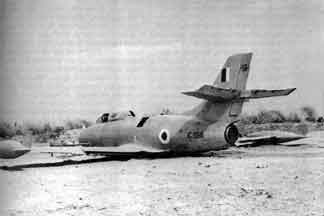1965 Kashmir Crisis

The Indians charged Pakistan with infiltrating into Kashmir. In response, the Indians launched an attack on Pakistan directed towards Lahore. The undeclared war lasted from August 16th to September 22nd.
In April 1965, border skirmishes between India and Pakistan escalated into full-scale warfare. It began when Pakistan attempted to instigate an insurgency in the Indian-administered Kashmir through a plan known as Operation Gibraltar. The objective of the operation was to infiltrate forces into Jammu and Kashmir to precipitate an insurgency against rule by India.
However, the operation failed, and the Indian Army counterattacked along the border with Pakistan. This led to what is commonly referred to as the Second Kashmir War or the 1965 Indo-Pakistani War. The fighting was intense, with both sides claiming victory, and it continued until September 22, 1965, when the United Nations mandated a ceasefire.
The aftermath of the war saw a significant diplomatic intervention by the world powers. Under the Tashkent Agreement, mediated by the Soviet Union in January 1966, both countries agreed to withdraw their troops and restore the original border, known as the Line of Control.
While the 1965 war didn't significantly change the status quo in terms of territorial control, it had important consequences. It not only further entrenched the bitterness and rivalry between India and Pakistan over Kashmir but also marked the beginning of a significant arms race between the two nations. This conflict highlighted the possibility of these disputes escalating into full-scale wars, which would later shape the geopolitical dynamics of the region, especially after both nations acquired nuclear capabilities.
 >
>